ticking the right craft chocolate boxes
plus, the obsession files, and the chocolate that got my attention yesterday
It’s no secret that I obsess over the craft of chocolate. It’s an obsession that has driven and sustained me. I’ve lain awake at night thinking about it. I’ve taken to heart the role of speaking out about underlying issues. There are aspects of it that frustrate me, right alongside aspects that give me intense joy.
I chose to become a craft chocolate maker because I adore the hands-on small scale truth of it. I had no clue how or if it would pan out. I took a deep breath, and took my first steps.
My target obsession has always been, and is, small for the purpose of being small. I can pick up every piece of equipment I use, or at least, give it a push when necessary. This only matters to me—my customers have no clue, nor do they need to care that I’ve never owned a tempering machine. My students have their own goals and dreams.
What they get from me is how I feel about spending my one, wild and precious life, making chocolate, every day I’ve been doing it.
If we don’t like the most intimate moments of making chocolate when it’s right in our face, smelling those brownies-baking notes, tasting and thinking through our next decisions, tipping the bars out of their moulds, then we should buy one of those automated bean to bar lines. Stop fooling ourselves it’s not about make more to make more $; efficiency—faster processes with fewer hands—is the domain of industrial made everything.
TBH, I have always wondered why so many small makers call what they’re doing a factory. Maybe to legitamize small batch amongst the big batch craft makers? I mean, seriously: is your kitchen counter a factory? Your cute work kitchen? Maybe it is better than ok to be small, in a world of mass-produced big everything?
“Craft production is the process of making objects by hand, while factory production is the process of making objects in large quantities using machinery. “
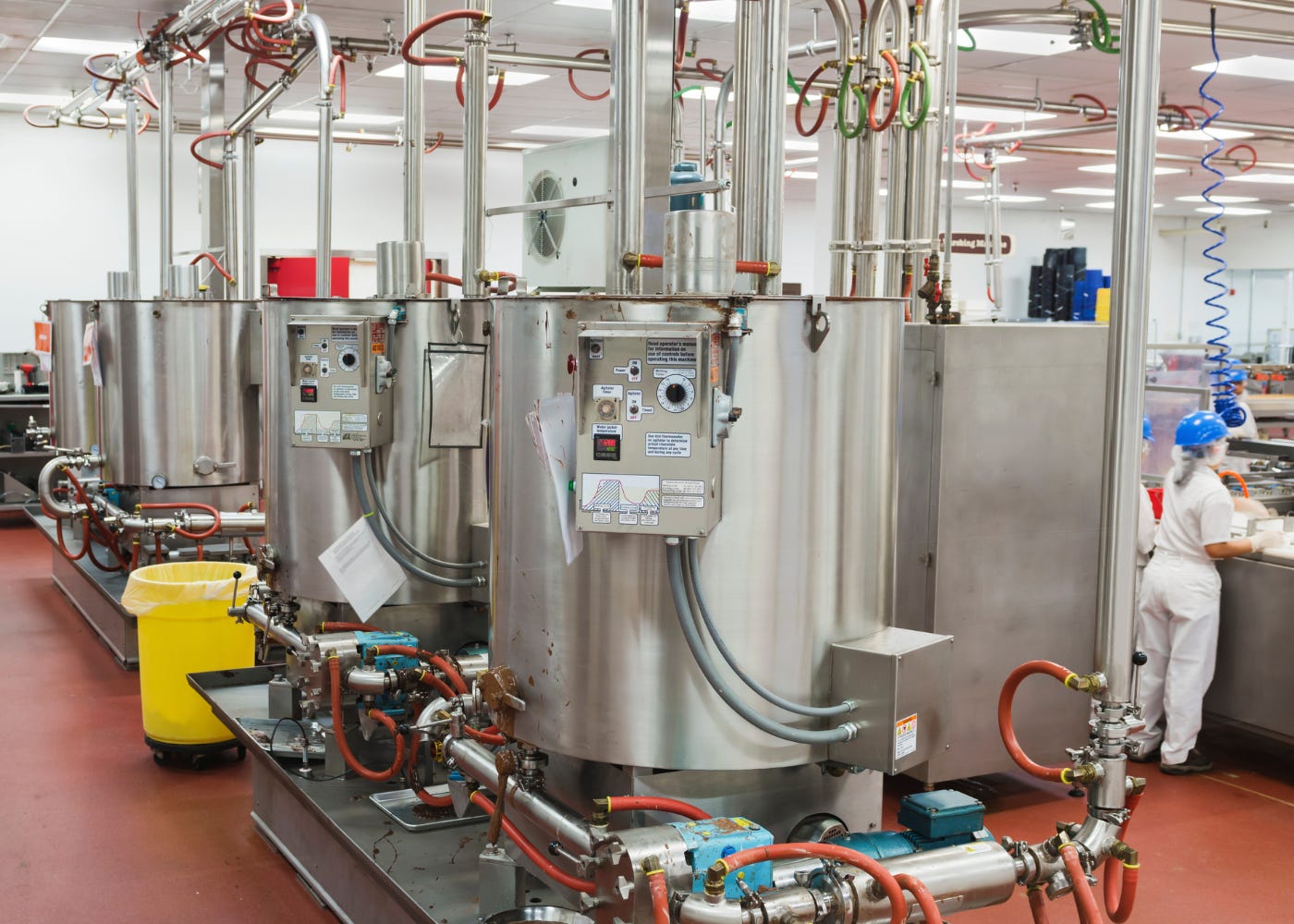
Answering a few of my how did you’s, in case you missed them.
I never set out to grow my chocolate biz into a factory.
I never set out to make chocolate for everyone, yet I made chocolate that lots of people began to want, and buy.
I never set out to look like craft chocolate, meaning, everybody else’s. Oh heck no! I wanted my work to look like it was unique. Sure, call it weird. I take that as a compliment and proof I succeeded.
I never set out to be predictable. Predictable chocolate is the big, industrial same old slapped with a different name and branding depending on where it’s marketed. Making the same bars year after year didn’t interest me.
I never set out to be award-winning. Yes, I entered two bars in one international competition and yes, proud of the certificates. More proud they had to clatify the categories in order for me to enter, since my bars didn’t fit. I wasn’t after judge-issued awards, I did however dream of people eating my chocolate and being moved by it. Remembering it.
I never set out to be the small batch cheerleader, but no one else wanted the position and we needed someone to step up and say Go Team Small Maker, loud and clear. Still do, maybe more than ever. Now that I’m wrapping up my chocolate company and school soon, I hope someone (ideally: an actual bean to bar maker who understands what we do, how miraculous it is we can even do it, the vast contributions small batch has made) steps up in my place.
I never set out to teach you or anyone There is One Way to Make Chocolate. I did share the methods and tweaks and how-to’s I discovered, especially the ones that made my company a success. I want you to do you.
I never, in fact, set out to teach chocolate. It was a natural flow of how my brain thinks, which seems to want to turn over every rock (detail) in its path and get a closer look. But that’s not enough for me: I like to point out the beautiful bits hidden just off the well-trod path, also the scarier things it’s easy to trip over no matter how many times before we’ve been at that exact spot.
I did not set out thinking I would meet some of the best human beings on the planet, because I had no idea you were out there. You are why cacaolove exists.
I also did not set out, yesterday when I stopped at our local Trader Joe’s and spied the Single Origin Organic Dark Chocolate with Vanilla Bean bar, made with, as the label states front and center,
Both grown in Madagascar, the cacao and the vanilla pair to create a nuanced vanilla chocolate bar
to be wondering if maybe this is a good thing. In the past I’d be kinda dismayed, and even yesterday my first thought was, no craft maker can make a bar like that, wrpa it, and sell it through widespread distribution with a $2.29 price tag.
Yet here we are. Actually, here it is: in the first week there are already Reddit threads, TikToks, Instagram posts, and Threads posts about this bar. More placement and free publicity than you could shake a craft chocolate-covered pretzel stick at.
A few thoughts.
It ticks all the craft chocolate boxes:
Single origin
Named origin
Recognizable origin
Organic ingredients
No soy lecithin (it uses sunflower)
Cute packaging with color + texture; avoids “candy bar” vibe
With one glaring difference (needle scratch on record album sound goes here), that price.
Can’t say I’ve ever seen a craft chocolate bar priced at $2.29 for 2.64 oz. Not saying this is a bad thing. In fact, I’m thinking this is the wake-up call craft chocolate needs. Take that however you will. Or don’t.
Why this is good comes down to one fact—the key fact that makes this bar both affordable and appealing to many consumers—is that it was made at origin.
In Madagascar, on the continent of Africa. Which has an allure and draw, not because most people have a clue about what chocolate made with Madagascar cacao tastes like, but because of the bad press given to industrial chocolate’s role in West Africa.
It is my guess that when the average consumer hears “slave labor chocolate” they associate that with Africa. Not Peru, not Ecuador. I’m not saying those countries of origin have or don’t have the same problems, just that the scale of cocoa in Africa, and thus the scale of the issue, is bigger and has been in the spotlight.
I also don’t think they link Africa to slave labor in the cocoa trade because of the news media or even craft chocolate. Say Harkin–Engel Protocol and you’ll get a blank stare, even from folks in craft chocolate.
I think they do it because of Tony’s Chocolonely. Even my Reese’s peanut butter cup loving friend has heard of Tony’s Chocolonely. My sister. My neighbor.
Things aren't being shared evenly in the chocolate supply chain. The chain is dominated by a handful of chocolate giants that profit from keeping the price of cocoa as low as possible (read more about it in this article of Washington Post). As a result, many farmers in West-Africa are forced to live in poverty. And that leads to child labour and modern slavery. ~~Tony’s Chocolonely website
This TJ’s bar might remind them of Tony’s, namely, that a different, purposeful, approach to chocolate is a thing.
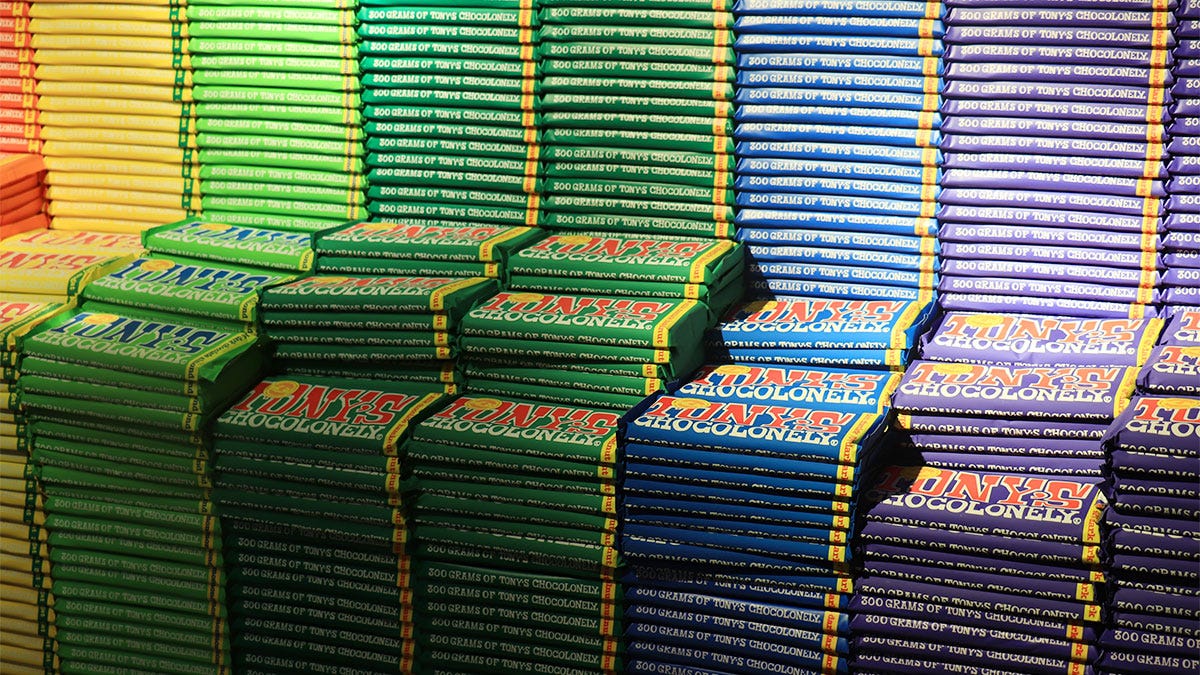
So here’s the thing.
The early pioneers of craft chocolate used a storyline to set apart their higher-priced products from status quo chocolate. They “educated” chocolate consumers that % + origin are an important difference, and worth the higher cost. Fine wine vs boxed, cheap wine. Key word: fine.
It doesn’t take a rocket scientist to know fine implies “better than what the average schmuck drinks or eats or looks at in a museum.” The word fine does not mean it tastes better (taste is subjective), just that it is objectively better.
Well, ya gotta have experts to decide that, right?
Basically, they said “we aren’t using the cocoa (with its roots in Colonialism) used by Ritter, Lindt, Callabaut, Nestle, Hershey’s, Mars, and all the chocolate industry monoliths who signed the Harkin-Engel Protocal. If you look up the full details of it and the businesses that signed, you might be surprised at the names you see.
But not just that. The early craft pioneers made chocolate that was %, i.e, flavor-focused. We’ve all heard the “craft is better because it uses more cacao” story: Hershey’s gives you 11% cacao, we give you 70%. This made the objectively better (fine) more legit because it was literally quantifiable. Plus, more cacao = highlight origin diversity.
sidenote. This might seem hard to believe in 2025, but in 2015 when I started making craft white chocolate, I was given the standard it’s not chocolate grief from fellow craft makers and experts.
To be craft, it was supposed to be
Single origin, not a blend
List the %
The % had to be higher than 50.
Early on fine and craft were synonymous, until they weren’t.
Here’s how AI defines fine vs craft chocolate
Fine chocolate and craft chocolate are both high-quality chocolates that are made with high-quality cocoa beans. Craft chocolate is often made with more care and attention to detail, and may be more expensive.
Fine chocolate
Made from high-quality cocoa beans
May include cocoa butter, sugar, and vanilla
May include inclusions like almonds or sea salt
Defined by its flavor, texture, appearance, and how its ingredients are sourced and processed
Craft chocolate
Made with high-quality, often single-origin cacao beans
May be made with natural flavors like almonds, hazelnuts, or pistachios
May reflect the values of ethical trade, sustainable practices, and traceability
May offer a more premium and unique experience
I probably don’t need to point out the overlap, or confusion, or that size isn’t mentioned a part of the defintions. Or how vague (and handy) the word may is in this context.
It does help make my point here, through a weird insight I had about that TJ’s bar.
It will likely be purchased by many more consumers than any craft chocolate maker’s Madagascar bars.
The majority of those purchases will be from people who are not craft chocolate industry-aware; they probably don’t even know we exist.
They won’t be buying it and aren’t already buying it because it has anything to do with the word fine.
They’ll buy it because, like I said, it ticks all the craft chocolate boxes, which are broadly appealing now,
Single origin
Named origin
Recognizable origin
Organic ingredients
No soy lecithin (it uses sunflower)
Cute packaging with color + texture; avoids “candy bar” vibe
But mainly, they will buy it because it is convenient, affordable, and they trust that Trader Joe’s wouldn’t sell it if it hadn’t passed some taste approval vetting.
In other words, it’s a low risk purchase at a time when everything is going up in cost.
Now, a shameless plug for a chocolate school dedicated to craft, taught by a bean to bar maker. That last bit actually does matter, and if you need a reference beyond what I’ve shared here, I can send you makers-who-know. This is the final year for me teaching, and that means the Bean to Bar ChocolateCraft Workshop as well. Yes you’ll have access to everything through the end of the year.
Thank you for reading, and happy chocolate making.
Mackenzie


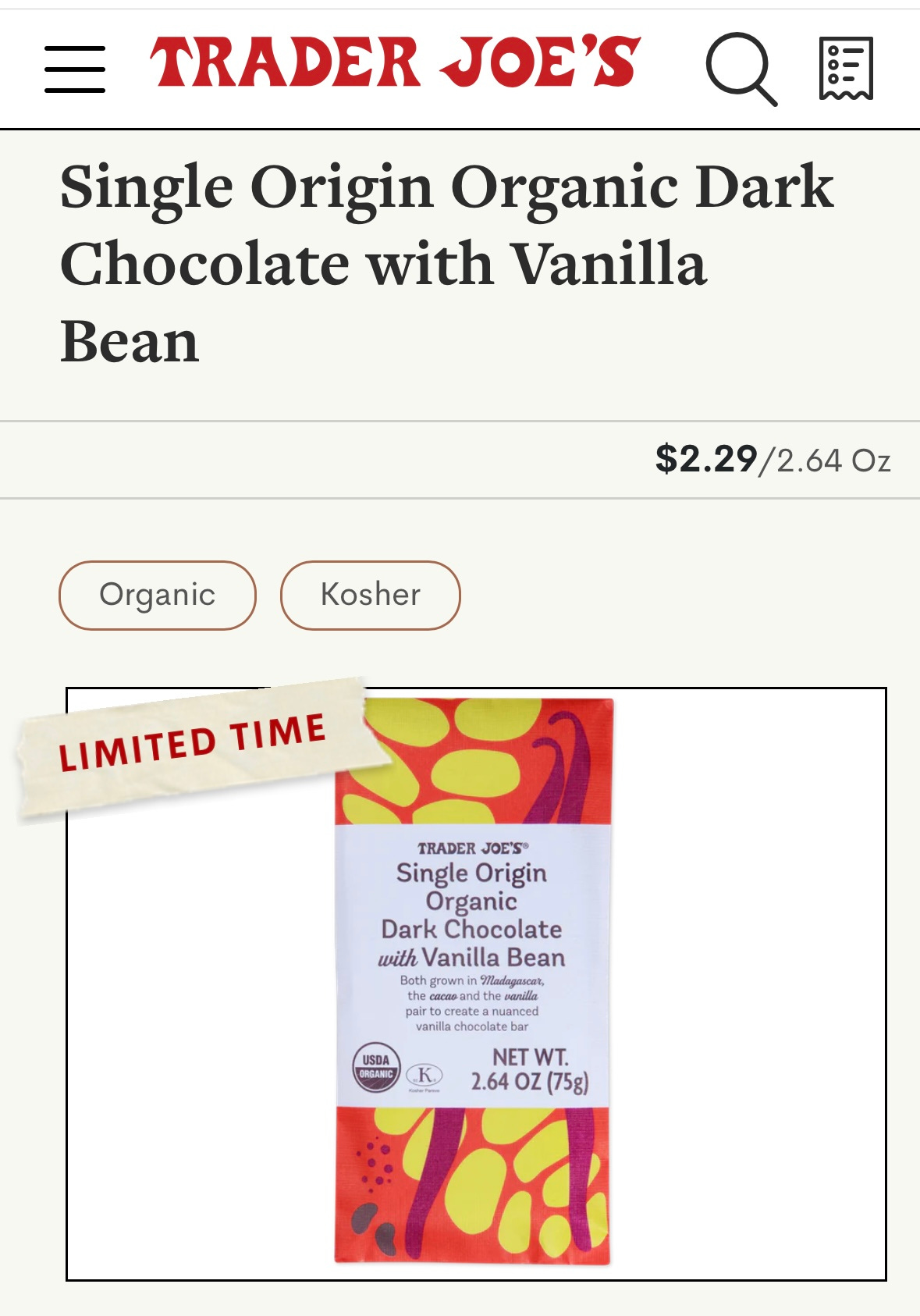
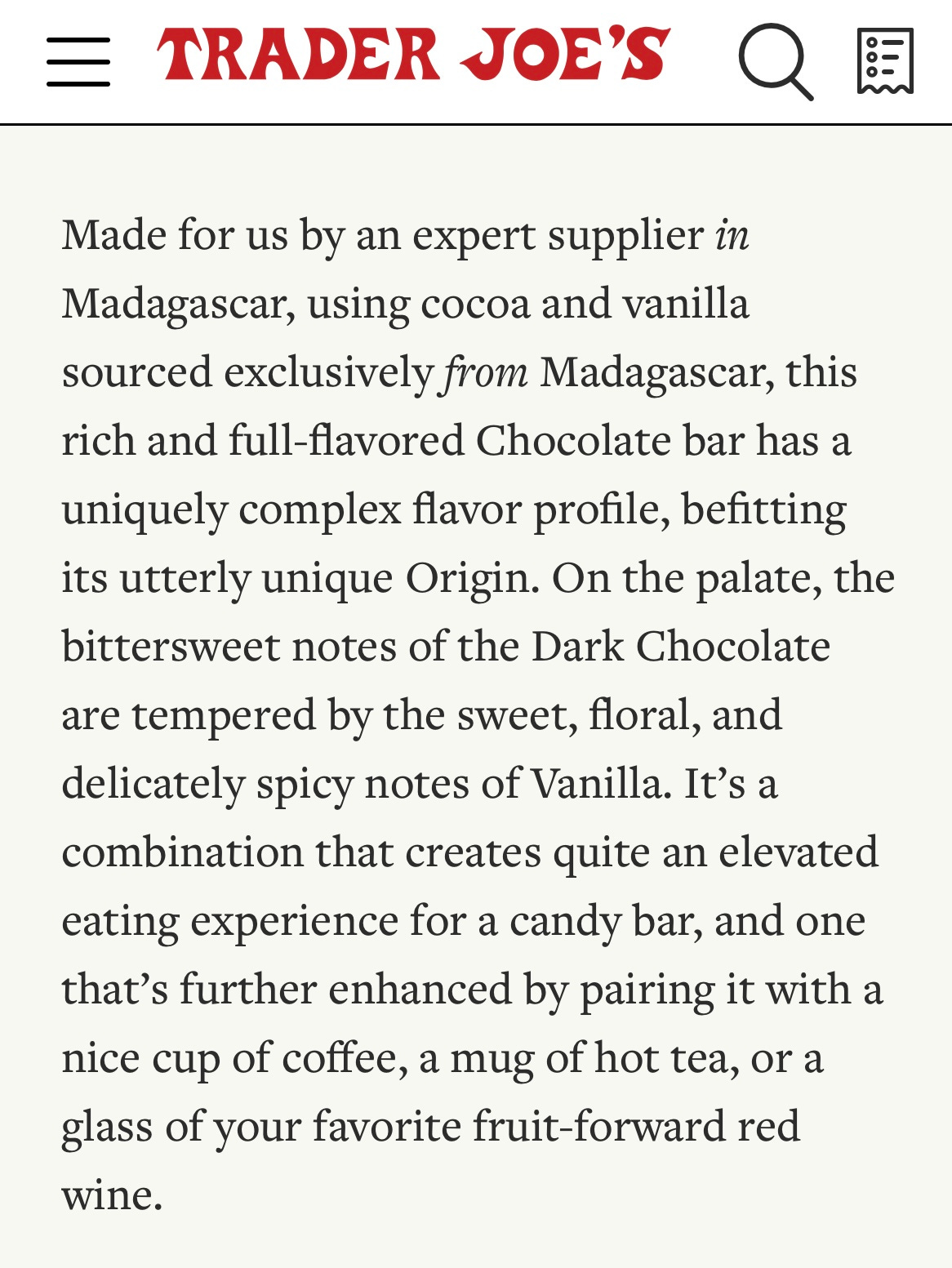

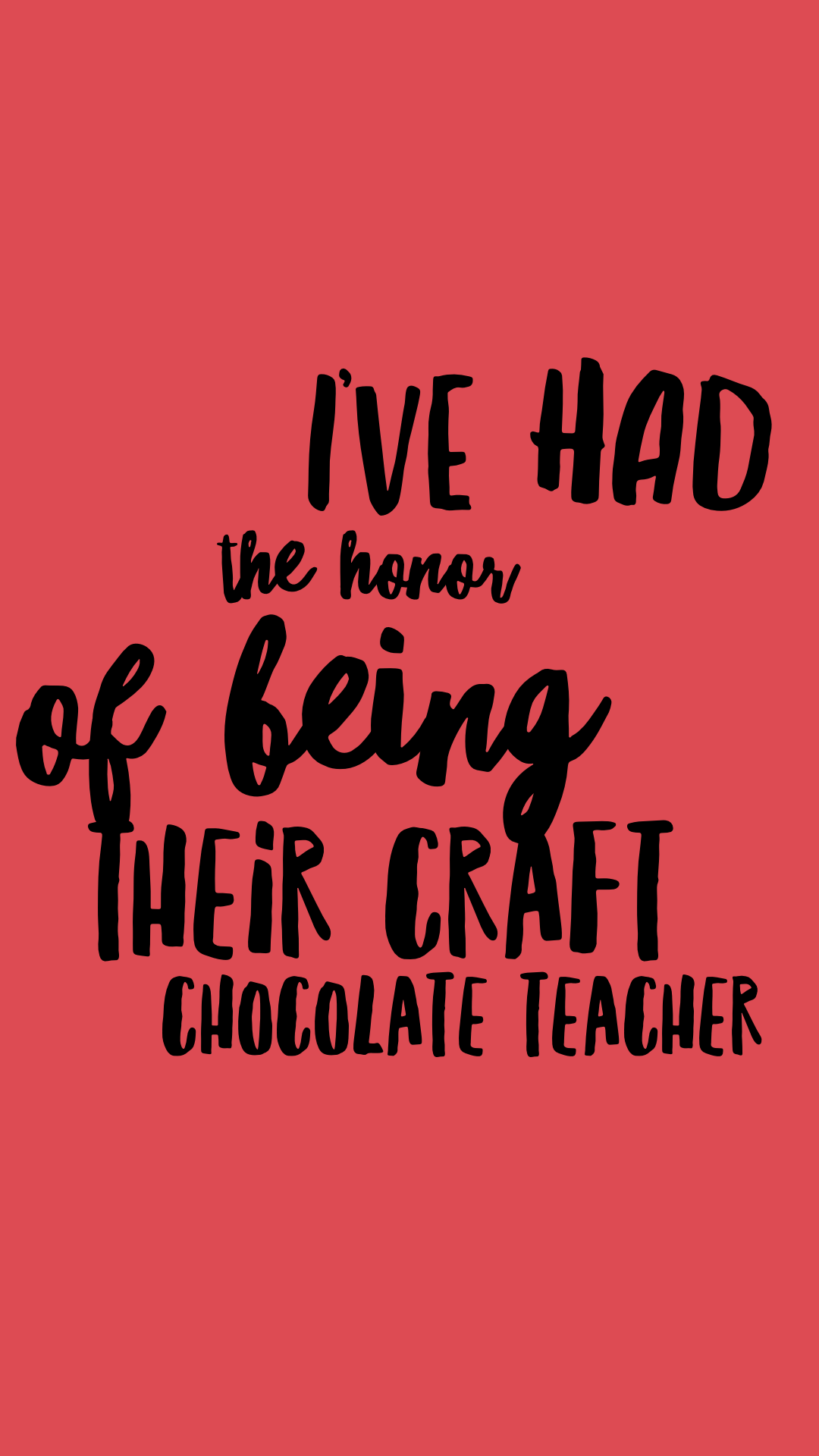
I absolutely love reading your posts McKenzie. Are you leaving craft chocolate as well or just teaching? My heart sank thinking of you leaving. Where will I go for inspiration? You’re selling a feeling not a product! You are taking people’s pain away not giving them a vitamin ( well kinda). We chocolate makers need you❤️.
Thought provoking as always 💕